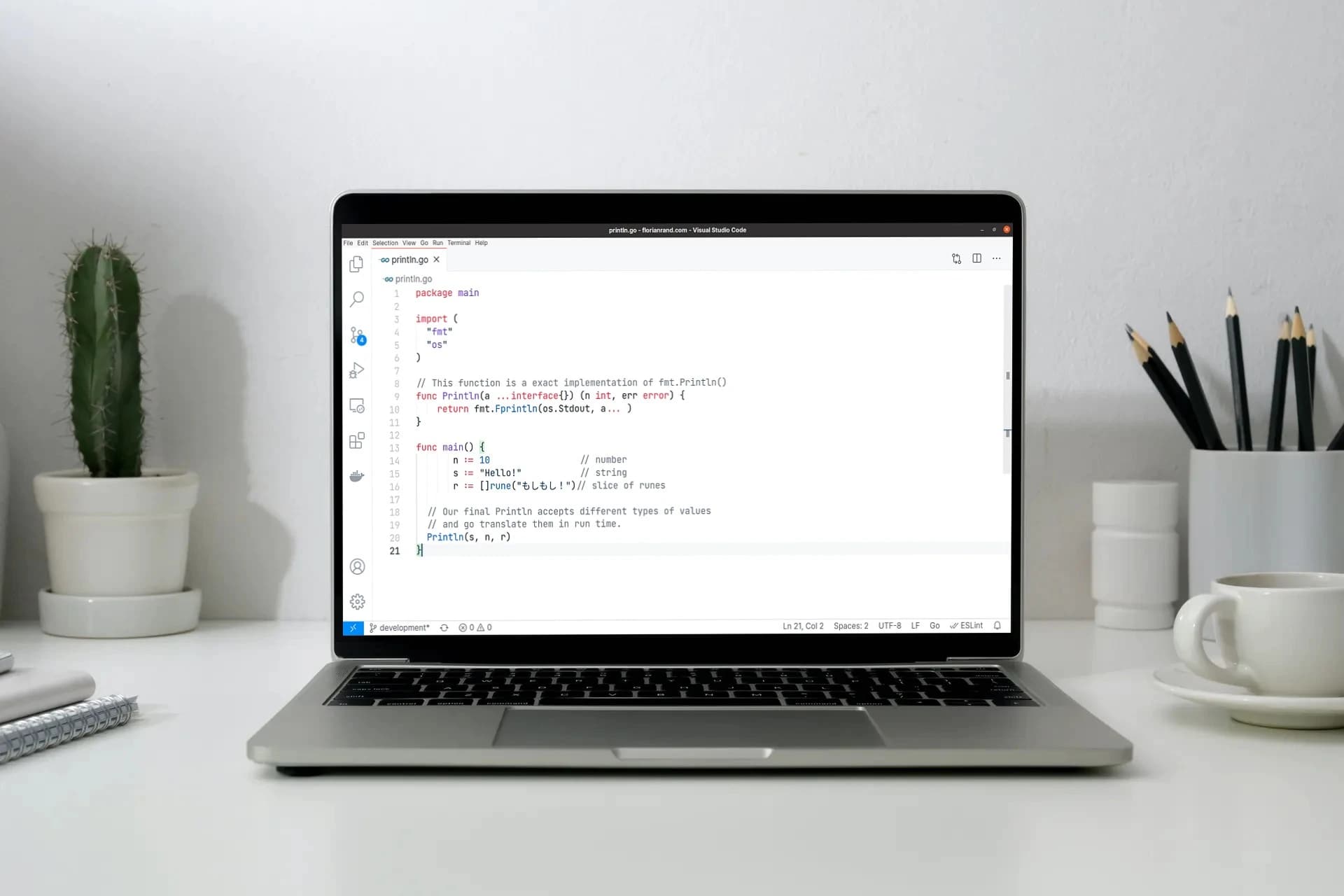
The empty interface in Go
First of all, to know more about interfaces, I suggest reading How to use interfaces in go and Go Data Structures: Interfaces.
Now, what's with The empty interface?
Let's say we are developing some sort of output printing library. This way, we start thinking on how to design our Print function. The function needs to receive some value(s) and then pass the result to the standard output. Let's see this with an example (go playground link):
// This function takes a string as a parameter
// and print it to the standard output
func Println(format string) (int n, err error) {
return fmt.Fprintln(os.Stdout, format)
}
But what happen if we want to print a Number? or a more complex input? Run the example in go playground:
package main
import (
"fmt"
"os"
)
func Println(format string) (n int, err error) {
return fmt.Fprintln(os.Stdout, format)
}
func main() {
Println("Number: ", 10)
}
---
// And this is what happen if we run our code,
//as we could expect:
prog.go:14:9: too many arguments in call to Println
have (string, number)
want (string)
Go build failed.
As we expected, our program fails. We are passing two parameters and we defined our function to
receive only one parameter of type string.
Then, how do we solve our Println function? Should we need to implement every use case for every crazy idea that comes to mind? Thankfully, we do not.
Go already takes care of situations like this one, and this is when the empty interface comes in
handy. In fact, this is how fmt package functions are implemented.
First, let's check the empty interface definition (from
a tour of go):
The interface type that specifies zero methods is known as the empty interface:
interface{}An empty interface may hold values of any type. (Every type implements at least zero methods.) Empty interfaces are used by code that handles values of unknown type. For example, fmt.Print takes any number of arguments of type interface{}.
Okey, let's take a look into the fmt package documentation, this is the specifications for the Fprintln function we used before in our Println:
func Fprintln(w io.Writer, a ...interface{}) (n int, err error)
That a ...interface{} in the second argument means that we are receiving from 1 to N of
empty interface type values (for those familiar with Javascript spread operator). And if we quote
again the definition:
Empty interfaces are used by code that handles values of unknown type.
Okey, unknown type, for our print function we really don't care what type is it, do we? We only are worried about writing it out into the standard output.
This would be our final program:
package main
import (
"fmt"
"os"
)
// This function is a exact implementation of fmt.Println()
func Println(a ...interface{}) (n int, err error) {
return fmt.Fprintln(os.Stdout, a... )
}
func main() {
n := 10 // number
s := "Hello!" // string
r := []rune("もしもし!")// slice of runes
// Our final Println accepts different types of values
// and go translate them in run time.
Println(s, n, r)
}
And this is it, this way we don't need to worry about implementing every use case, because Go is
handling in runtime the conversion of those unknown types for us, and now we can do something like
this: Println("Hello ", 10, &v) without worrying about parameter types, letting us design verstile
functions.